Related Research Articles
In Unix and Unix-like operating systems, chmod is the command and system call used to change the access permissions and the special mode flags of file system objects. Collectively these were originally called its modes, and the name chmod was chosen as an abbreviation of change mode.

The C shell is a Unix shell created by Bill Joy while he was a graduate student at University of California, Berkeley in the late 1970s. It has been widely distributed, beginning with the 2BSD release of the Berkeley Software Distribution (BSD) which Joy first distributed in 1978. Other early contributors to the ideas or the code were Michael Ubell, Eric Allman, Mike O'Brien and Jim Kulp.

uname is a computer program in Unix and Unix-like computer operating systems that prints the name, version and other details about the current machine and the operating system running on it.

The ln command is a standard Unix command utility used to create a hard link or a symbolic link (symlink) to an existing file or directory. The use of a hard link allows multiple filenames to be associated with the same file since a hard link points to the inode of a given file, the data of which is stored on disk. On the other hand, symbolic links are special files that refer to other files by name.
In computing, touch is a command used to update the access date and/or modification date of a computer file or directory. It is included in Unix and Unix-like operating systems, TSC's FLEX, Digital Research/Novell DR DOS, the AROS shell, the Microware OS-9 shell, and ReactOS. The command is also available for FreeDOS and Microsoft Windows.

In computing, cp is a command in various Unix and Unix-like operating systems for copying files and directories. The command has three principal modes of operation, expressed by the types of arguments presented to the program for copying a file to another file, one or more files to a directory, or for copying entire directories to another directory.
paste is a Unix command line utility which is used to join files horizontally by outputting lines consisting of the sequentially corresponding lines of each file specified, separated by tabs, to the standard output.
The GNU Core Utilities or coreutils is a package of GNU software containing implementations for many of the basic tools, such as cat, ls, and rm, which are used on Unix-like operating systems.
The Thompson shell was the first Unix shell, introduced in the first version of Unix in 1971, and was written by Ken Thompson. It was a simple command interpreter, not designed for scripting, but nonetheless introduced several innovative features to the command-line interface and led to the development of the later Unix shells.
Expect is an extension to the Tcl scripting language written by Don Libes. The program automates interactions with programs that expose a text terminal interface. Expect, originally written in 1990 for the Unix platform, has since become available for Microsoft Windows and other systems.

rm is a basic command on Unix and Unix-like operating systems used to remove objects such as computer files, directories and symbolic links from file systems and also special files such as device nodes, pipes and sockets, similar to the del command in MS-DOS, OS/2, and Microsoft Windows. The command is also available in the EFI shell.

A command shell is a command-line interface to interact with and manipulate a computer's operating system.
In computing, tee is a command in command-line interpreters (shells) using standard streams which reads standard input and writes it to both standard output and one or more files, effectively duplicating its input. It is primarily used in conjunction with pipes and filters. The command is named after the T-splitter used in plumbing.
In computing, sleep is a command in Unix, Unix-like and other operating systems that suspends program execution for a specified time.
expr is a command line utility on Unix and Unix-like operating systems which evaluates an expression and outputs the corresponding value. It first appeared in Unix v7. The command is available for Microsoft Windows as part of the UnxUtils collection of native Win32 ports of common GNU Unix-like utilities. The expr command has also been ported to the IBM i operating system.
In computing, a shebang is the character sequence consisting of the characters number sign and exclamation mark at the beginning of a script. It is also called sharp-exclamation, sha-bang, hashbang, pound-bang, or hash-pling.
In a Unix shell, the full stop called the dot command (.) is a command that evaluates commands in a computer file in the current execution context. In the C shell, a similar functionality is provided as the source command, and this name is seen in "extended" POSIX shells as well.

In Unix and Unix-like operating systems, printf is a shell builtin that formats and prints data.
The csplit command in Unix and Unix-like operating systems is a utility that is used to split a file into two or more smaller files determined by context lines.
In computing, process substitution is a form of inter-process communication that allows the input or output of a command to appear as a file. The command is substituted in-line, where a file name would normally occur, by the command shell. This allows programs that normally only accept files to directly read from or write to another program.
References
- ↑ http://www.in-ulm.de/~mascheck/bourne/#system3 Bourne Shell changes with System III
- ↑ test(1) — coreutils — Debian buster — Debian Manpages
- ↑ "Native Win32 ports of some GNU utilities". unxutils.sourceforge.net.
- ↑ IBM. "IBM System i Version 7.2 Programming Qshell" (PDF). IBM . Retrieved 2020-09-05.
- ↑ IEEE Std 1003.1, 2004, documentation for
test